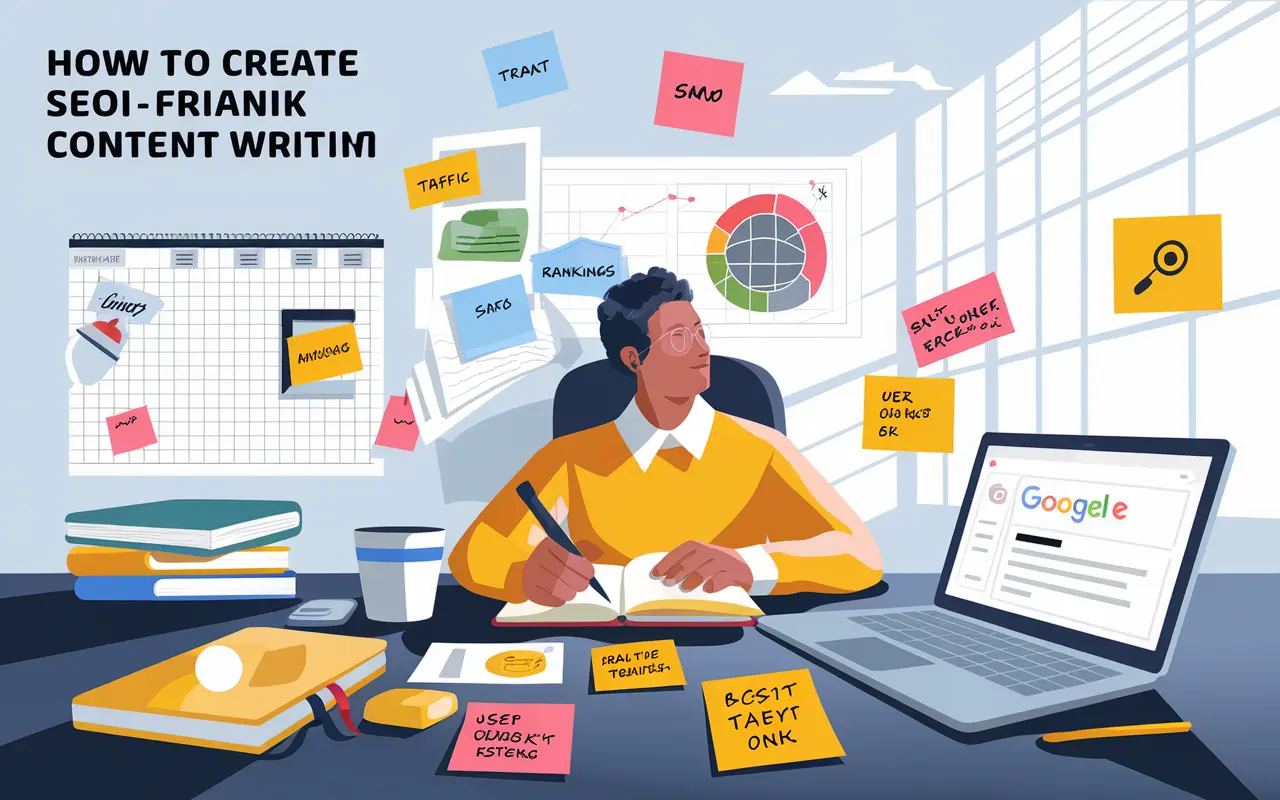Understanding SEO-Friendly Content in the Digital Age
SEO-friendly content refers to web content that is crafted with both users and search engines in mind. It incorporates best practices in keyword targeting, user experience design, and content structure to improve visibility on search engine result pages (SERPs). Whether you are writing blog posts, product descriptions, or landing pages, creating SEO-friendly content ensures that your digital efforts are discoverable and indexable by search engines like Google.
Producing SEO-optimized content is a critical aspect of modern SEO services, influencing how audiences find and interact with your website. Strong content enhances on-page SEO, builds topical authority, and improves engagement metrics like time on site and bounce rate—factors used in Google’s algorithm to determine rankings.
Key Takeaway
Creating SEO-friendly content is essential for driving organic traffic, improving search rankings, and establishing brand authority through valuable, optimized, and user-focused content.
Why SEO-Friendly Content Matters for Business Growth
Creating SEO-friendly content is pivotal to any successful SEO strategy. Here’s why it holds massive importance:
1. Enhances Search Visibility
Well-optimized content helps search engines understand what a page is about, improving its chances of ranking for relevant keywords. Higher rankings mean increased visibility and traffic.
2. Boosts User Engagement
SEO-friendly content is not just about keywords but also user experience. Clear headings, concise language, and engaging visuals retain users longer, signaling value to search engines.
3. Supports Conversion Goals
By answering search intent effectively, optimized content guides users towards the next step—whether it’s making a purchase, signing up, or submitting a form.
Best Practices for Creating SEO-Friendly Content
- Perform Keyword Research: Use tools like Google Keyword Planner, Ahrefs, or SEMrush to find terms your audience is searching for.
- Understand Search Intent: Is the user looking for information, a product, or a solution? Match content with the correct intent (informational, navigational, transactional).
- Craft Compelling Titles & Headings: Use primary keywords naturally and reflect what readers can expect.
- Optimize Meta Tags: Include keywords in meta titles and descriptions for higher CTRs and better relevancy signals to search engines.
- Use SEO-Friendly URLs: Keep URLs short, keyword-rich, and readable (e.g., /seo-content-writing/).
- Include Internal and External Links: Link to related internal pages to boost crawlability and user navigation. Use trustworthy external sources for credibility.
- Maintain Readability: Break content into short paragraphs, use bullet points and subheadings. Aim for a reading level appropriate for your audience.
- Image Optimization: Add descriptive filenames and alt-text. Compress images to boost speed.
- Update Content Regularly: Keep information fresh and relevant. Outdated content can harm rankings.
How SEO-Friendly Content Powers Search Performance
Let’s look at how creating SEO-friendly content drives organic success from a technical and practical perspective.
Content Meets Algorithms
Google evaluates web pages through content themes, keywords, hierarchy, and usability. By structuring content with semantic markup (H2s, H3s), using LSI keywords, and maintaining logical flow, you align with Google’s algorithms and improve crawlability and understanding.
User Experience and Dwell Time
Engaging content tailored to the reader’s search intent leads to longer time on site, more internal clicks, and lower bounce rates—all behavioral signals that perform well in search algorithms.
| Element | Optimized Version | SEO Impact |
|---|---|---|
| Title | “Best Hiking Gear for 2024 – Buyer’s Guide” | Higher CTR and relevance |
| Meta Description | “Discover the top hiking gear for 2024. Expert picks with reviews and price comparisons.” | Encourages clicks, improves SERP presence |
| Alt Text | “Waterproof hiking boots on a rocky trail” | Improved image SEO |
Real Impact: A Case Study in Content Optimization
Problem: A Blog Getting Traffic But No Rankings
A B2B SaaS website had quality content but wasn’t ranking on page one for competitive keywords. Their bounce rate was high and internal link structure nearly non-existent.
Solution: Complete SEO Content Overhaul
We restructured content using keyword and intent analysis, rewrote headers with targeted phrases, added internal links to relevant resources, optimized meta tags, and added multimedia elements like infographics and videos.
Results: 132% Increase in Organic Traffic
Within 3 months, organic traffic increased by 132%, bounce rate dropped by 38%, and the main keyword moved from page 4 to position 3 on Google. Engagement also improved with longer session durations.
Common Pitfalls to Avoid in SEO Content Creation
- Keyword Stuffing: Overusing keywords makes content unnatural and penalizable.
- Thin Content: Creating shallow pages without depth or substance fails both users and engines.
- Duplicate Content: Using the same content across pages or websites can get flagged by Google.
- Neglecting Mobile Users: If your content isn’t responsive, it won’t perform well in mobile-first indexing.
- Skipping Alt Text: Images without alt text miss critical SEO opportunities and accessibility standards.
Related SEO Terms to Deepen Your Understanding
- On-Page SEO: Optimizing elements within your website to boost search visibility.
- SEO Audit: A full technical and content analysis to identify optimization opportunities.
- Keyword Research: Finding the right terms to target in your SEO content strategy.
FAQs About Creating SEO-Friendly Content
SEO-friendly content uses relevant keywords, answers search intent effectively, follows formatting best practices, and enhances user experience.
It depends on the topic and competition. However, long-form content (1000–2500 words) tends to perform better for in-depth subjects.
Review and update content every 6–12 months to maintain relevance, fix outdated data, and stay competitive in rankings.
Yes. Images with proper alt tags, file names, and optimized sizes contribute to user experience and image search visibility.
Conclusion: Make SEO-Friendly Content Your Competitive Advantage
In the competitive digital space, creating SEO-friendly content isn’t an option—it’s a necessity. It aligns your messaging with user needs and search engine algorithms to drive sustainable traffic, engagement, and business growth. By applying best practices like keyword research, content structuring, and multimedia usage, you can produce content that ranks—and converts. Ready to start? Explore more strategies on our comprehensive SEO learning hub.






